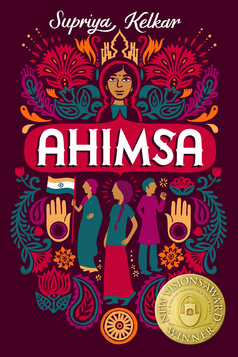Ahimsa
Review
By Publishers Weekly
Set in a fictional Hindi-speaking Indian town in 1942, Kelkar’s debut is inspired by the life of her great-grandmother, who was active in the Indian independence movement led by Gandhi. The novel smoothly and realistically depicts the complex segregated world of India in those years, including characters from different castes. Told from the point of view of 10-year-old Anjali Joshi, a high-born Brahmin, the story traces the development of the nonviolence (Ahimsa in Hindi) movement and the Hindu-Muslim conflicts that arose at the time, along with the effects of both on one community and, especially, on Anjali’s family. When Anjali’s mother becomes a nonviolent activist fighting for Indian independence and social justice among the castes, Anjali—who is initially horrified by the her mother’s actions—gets swept up in the causes, focusing especially on treating the untouchables, whom she learns to call Dalits, as equals. Kelkar builds compelling tension, which leads to grim outcomes, while highlighting Anjali’s resulting bravery and maturity. An author’s note provides historical background, and a glossary of Hindi words is included.
Reviews & Comments
School Library JournalBooklist
Padma Venkatraman, author of THE BRIDGE HOME
Uma Krishnaswami, author of STEP UP TO THE PLATE, MARIA SINGH
Vidhu Vinod Chopra, director of the films 1942: A LOVE STORY and EKLAVYA: THE ROYAL GUARD
Rajkumar Hirani, director of the films 3 IDIOTS, PK, and LAGE RAHO MUNNABHAI
Foreword Reviews
Kirkus Reviews







